Rimfire Training: Semi-Auto vs. Manual Actions
Oleg Volk 10.15.13

The debate about the merits of teaching new shooters on semi-automatic vs. manually operated .22 rifles started almost a century ago, when semi-autos first appeared. Prior to that, the debate was repeaters vs. single shot rifles. Even the military of the day had that debate, which is why even some of the military rifles came with a magazine cut-off for single loading. Today we have all three available as options. Which one to pick?
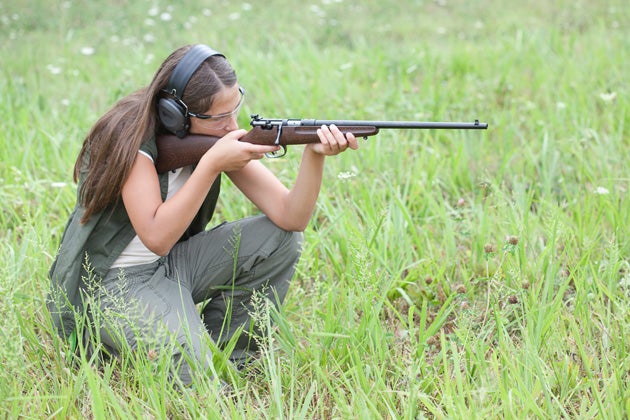
The advantages of single-shot designs are many. They tend to be lightweight, simple in operation, and reliable. The light weight means that adults can fire them one-handed if necessary, giving them additional utility as pack rifles. Most will work with .22 Short and Long ammunition as well as Long Rifle. In learning to shoot with them, the emphasis is on the process of operating the firearm, being aware of its condition, and taking the time to place the one available shot profitably. Many of the single-shot .22s make cocking the hammer or the striker as a separate operation. The rate of fire is low, adding to the importance of each shot.
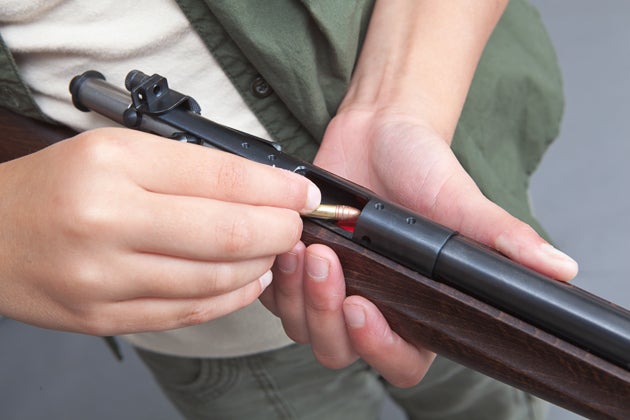
Single-shot rifles have a down side. Most of them require breaking the cheek weld for reloading. They place the attention of the shooter on the firearms, away from the target and the immediate environment. For those reasons, magazine rifles have become popular.
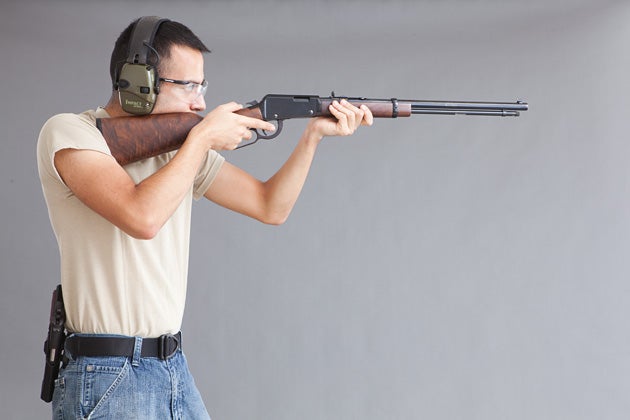
A tube magazine lever action rifle allows uninterrupted strings of fire. Reloading is still a deliberate action, but it can be done without moving the head from behind the sights. The great advantage of manual actions — slide, lever, bolt or toggle — is the ability to run varying power and often varying lengths of ammunition. Most semi-automatic rifles are limited to high velocity .22 LR.
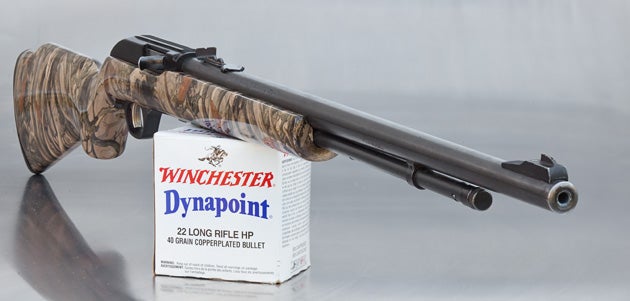
The disadvantage of the tube magazine is in the unloading. It’s quicker and easier to remove a box magazine and cycle the bolt to un-chamber than it is to clear a tube magazine and verify it unloaded. On the plus side, it’s harder to misplace an integral magazine than a detachable one. The overall rate of fire with this kind of gun is still relatively low. The emphasis is mostly on the marksmanship, not on either making the gun function or on performing tactical drills.
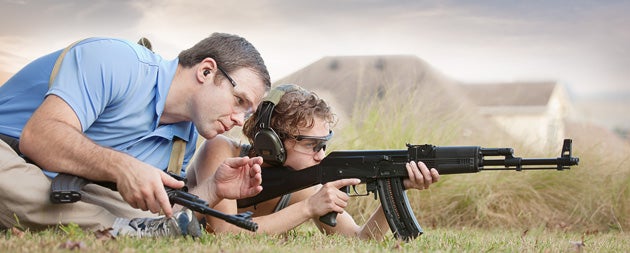
Ruger 10-22 is the most common detachable magazine rimfire trainer. Versatile, reliable, and adaptable, it’s popular for a reason. It works exceptionally well for events like Appleseed training, especially when upgraded with better sights and trigger.
Rimfire versions of centerfire rifles (SIG 522, various .22 clones of AR-15 and AK) excel for “tactical” training. Although the word has been overused of late, it does have a specific meaning in training: learning to solve specific problems with judicious application of maneuver, gunfire, and other expedients. Mas Ayoob’s and Kathy Jackson’s courses are famous for requiring critical thinking and sometimes involve holding fire as the solution. The firearm becomes a part of a more complex whole, and it merely has to approximate the learner’s main weapon so as to not pose a distraction when practicing new skills. Because they semi-automate the firing process, such carbines are often more fun for kids to use at the range than the more labor-intensive single shot designs. Anything that makes range trips more enjoyable helps bring more people into the gun-owning community.
Rimfire clones of the real thing are seldom exact, but they are usually close enough. AR-15 uppers in particular are usually accurate enough to be sought after for marksmanship uses as well as for training. They offer the advantages of long, uninterrupted strings of fire with full concentration on the marksmanship basics, combined with the convenience of fast reloading and the ease of making safe.
As you can see, all three types have advantages that recommend them for various kinds of training. The real hot debate will be next week — iron sights or optics for teaching new shooters?